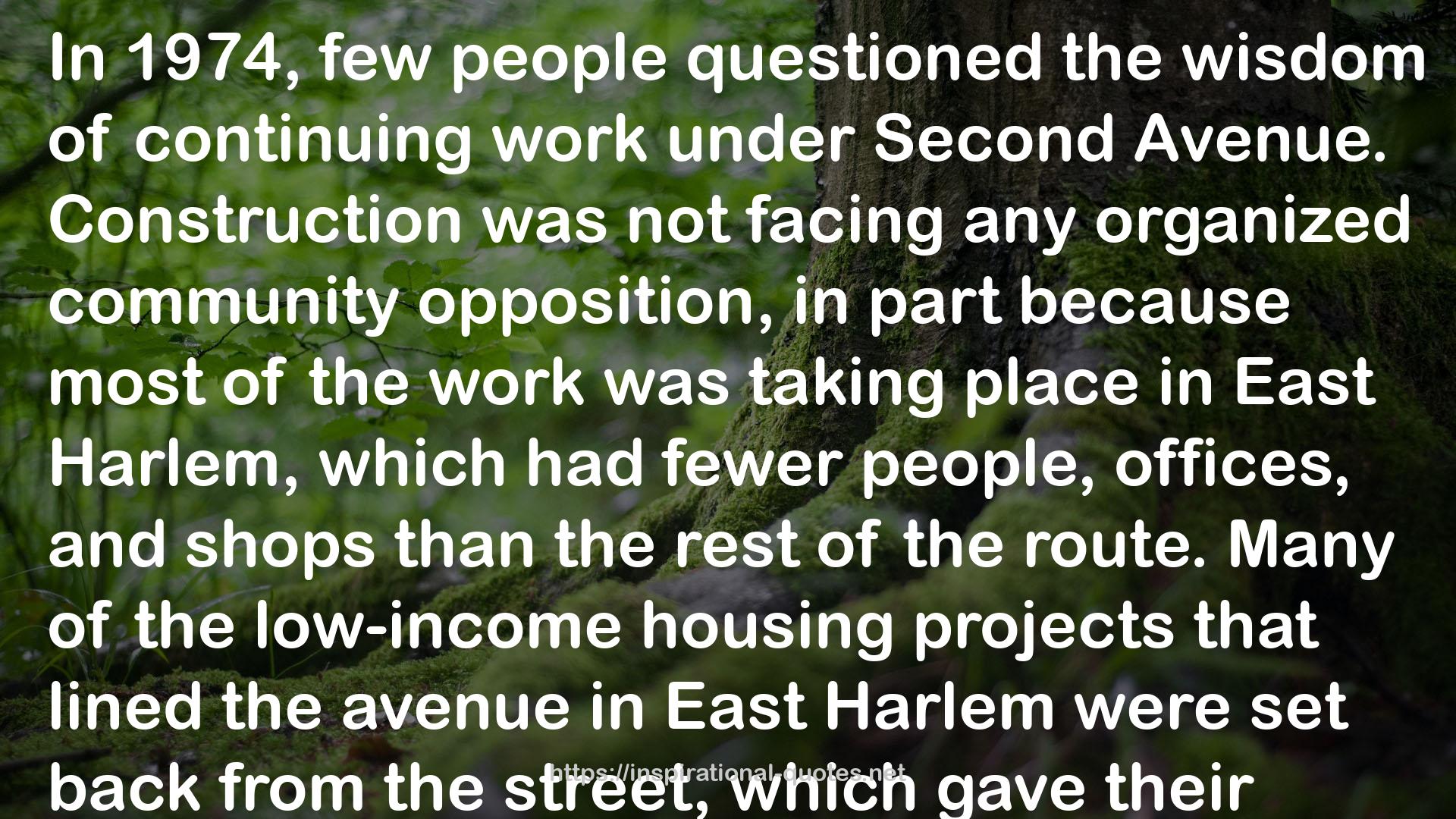" In 1974, few people questioned the wisdom of continuing work under Second Avenue. Construction was not facing any organized community opposition, in part because most of the work was taking place in East Harlem, which had fewer people, offices, and shops than the rest of the route. Many of the low-income housing projects that lined the avenue in East Harlem were set back from the street, which gave their residents a buffer from the cut-and-cover construction. The neighborhood was facing much more serious issues than subway construction impacts, including a persistently high unemployment rate, an increasing number of abandoned buildings, and a heroin epidemic. "
― , Last Subway: The Long Wait for the Next Train in New York City
